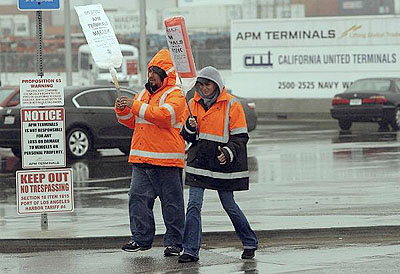A few days ago I quoted a negotiator for the shipping companies at the port of LA saying that clerical workers there had been offered a deal that would raise average annual pay “to $195,000 from $165,000, 11 weeks’ paid vacation  and a generous pension increase.” That’s a lot! Today the port strike is over, and the LA Times provides a more accurate picture of pay for these workers:
and a generous pension increase.” That’s a lot! Today the port strike is over, and the LA Times provides a more accurate picture of pay for these workers:
The workers don’t have ordinary clerk and secretarial jobs. They are logistics experts who process a massive flow of information on the content of ships’ cargo containers and their destinations. The clerical workers, among the highest-paid in the country, are responsible for booking cargo, filing customs documentation, and monitoring and tracking cargo movements.
According to union officials and the Harbor Employers Assn., the average hourly rate for clerical workers is $40.50 an hour — which amounts to about $84,000 a year. In comparison, the median annual wage for cargo and freight agents was $37,150 in May 2010, according to the most recent data from the Bureau of Labor Statistics.
As talks dragged on, employers offered to raise the union workers’ total compensation package. The employers had said total compensation currently averages $165,000, but that amount includes healthcare, pension contributions, time off and other benefits in addition to salary.
That’s still a lot, and obviously these folks have a pretty rich benefits package if it’s about equal to base pay. But since I wrote about this earlier, I just wanted to follow up with the straight dope now that we have it. You can decide for yourself what you think about it.

















